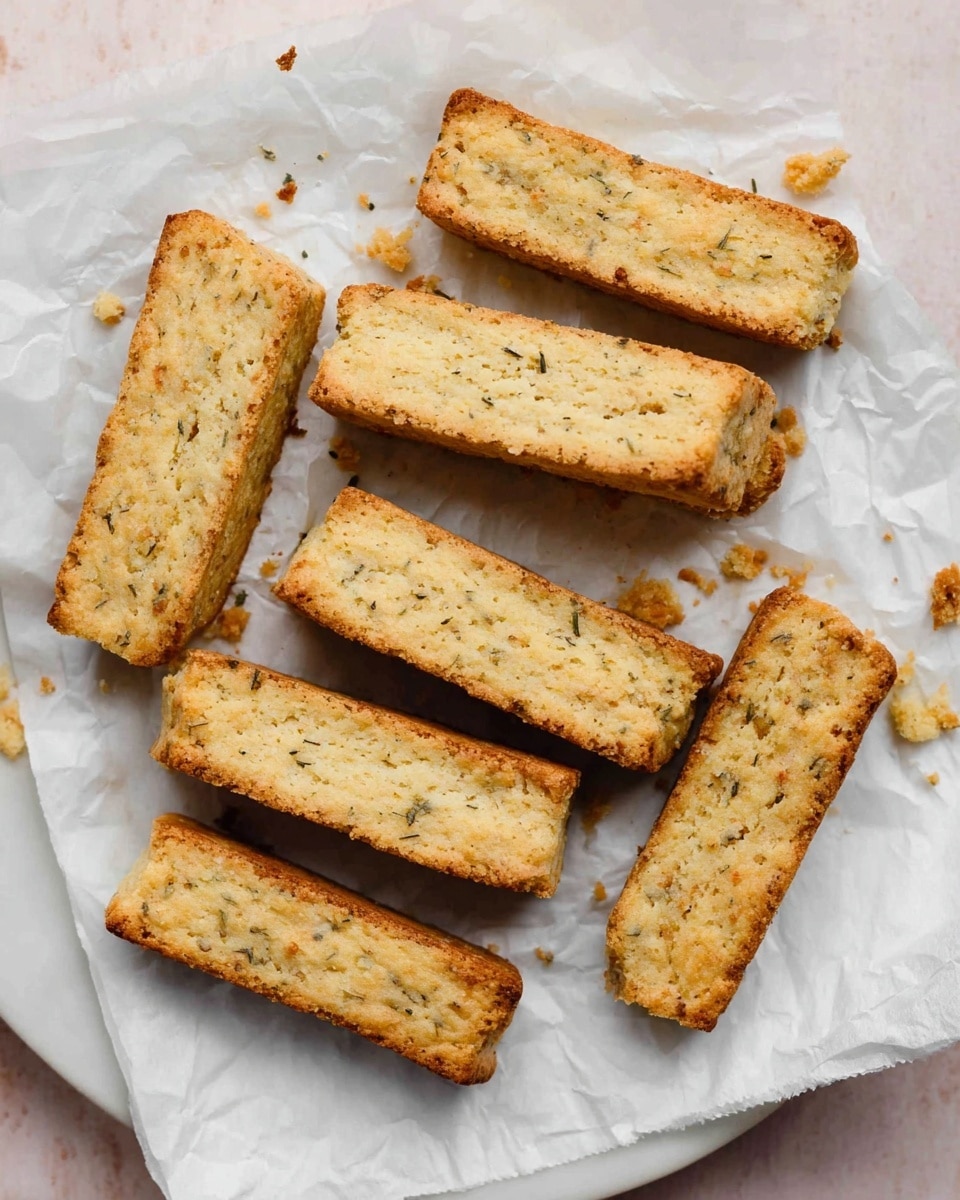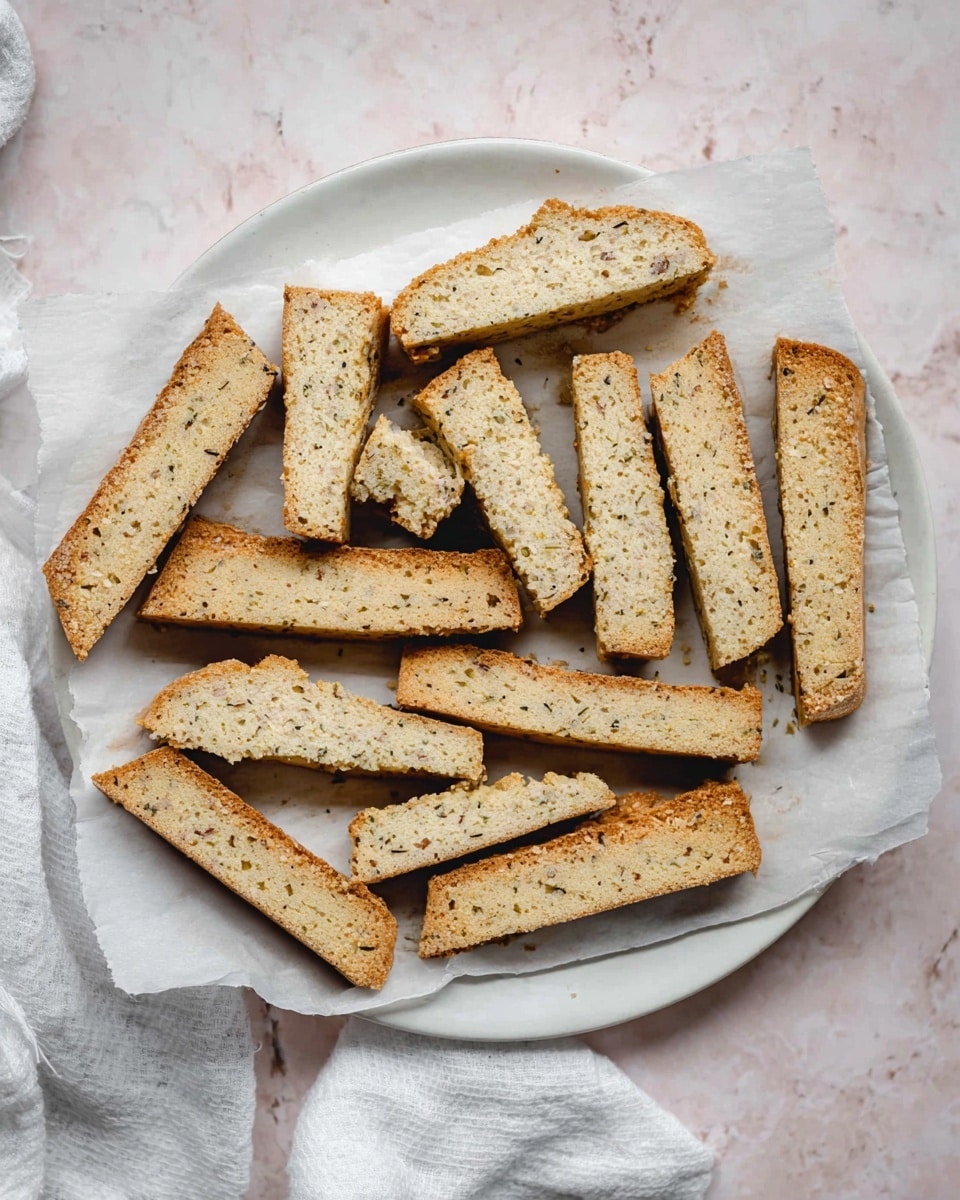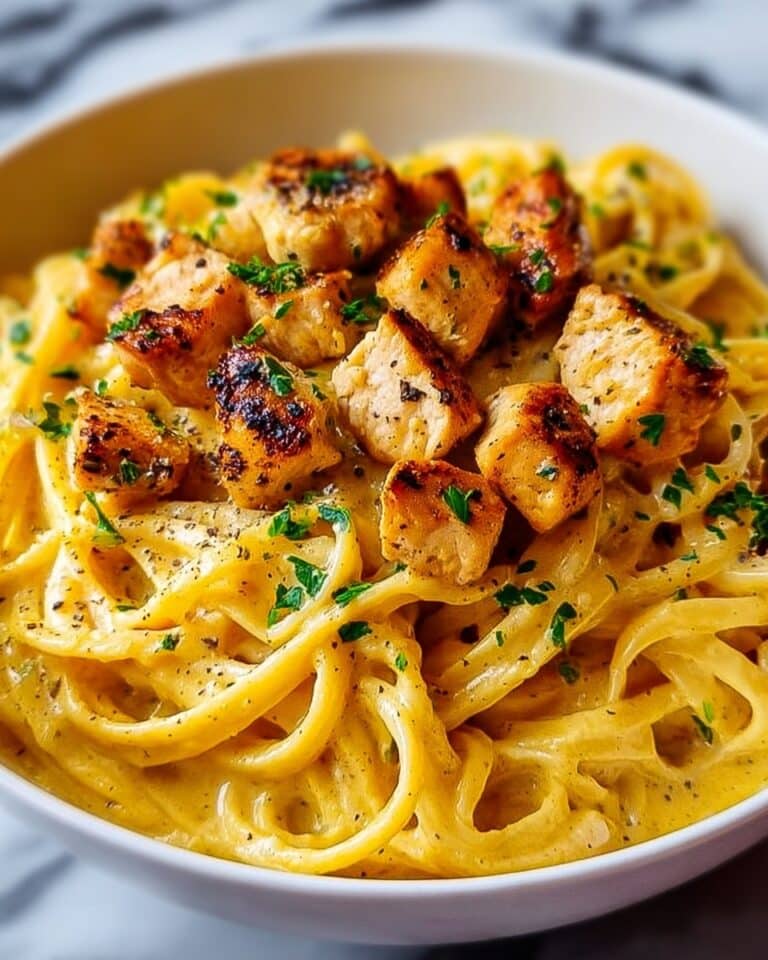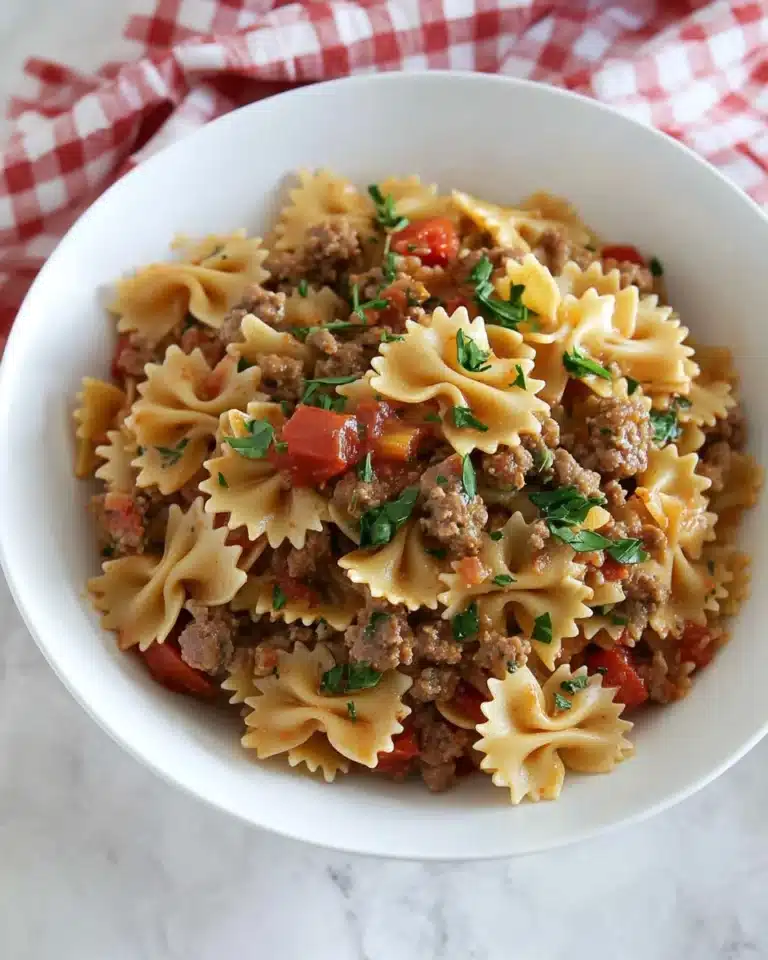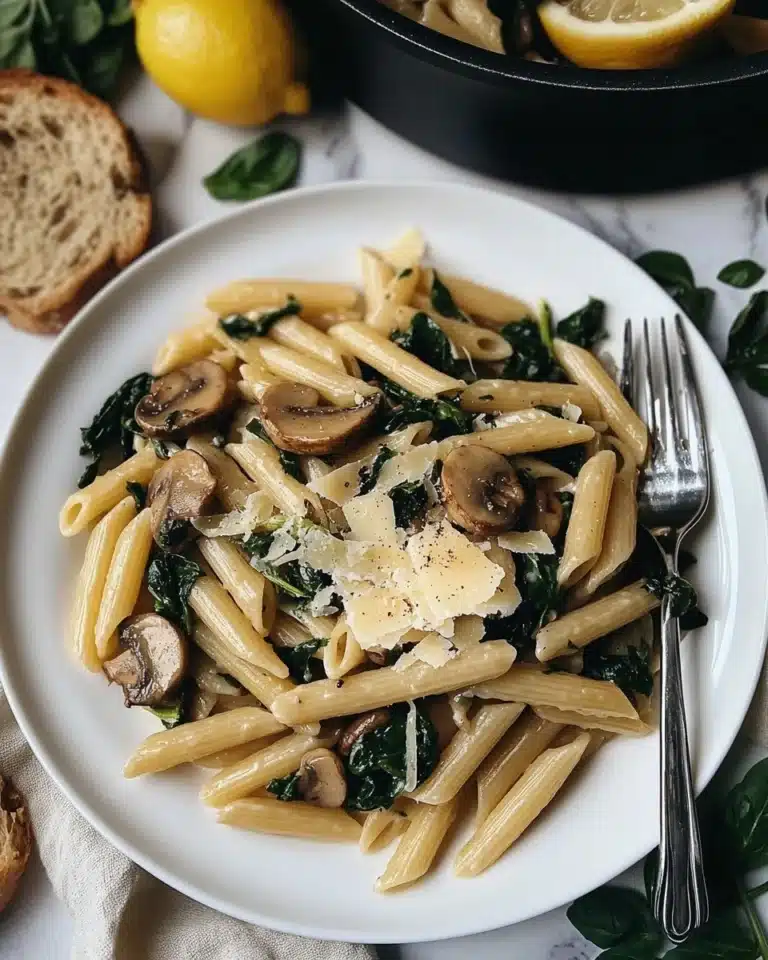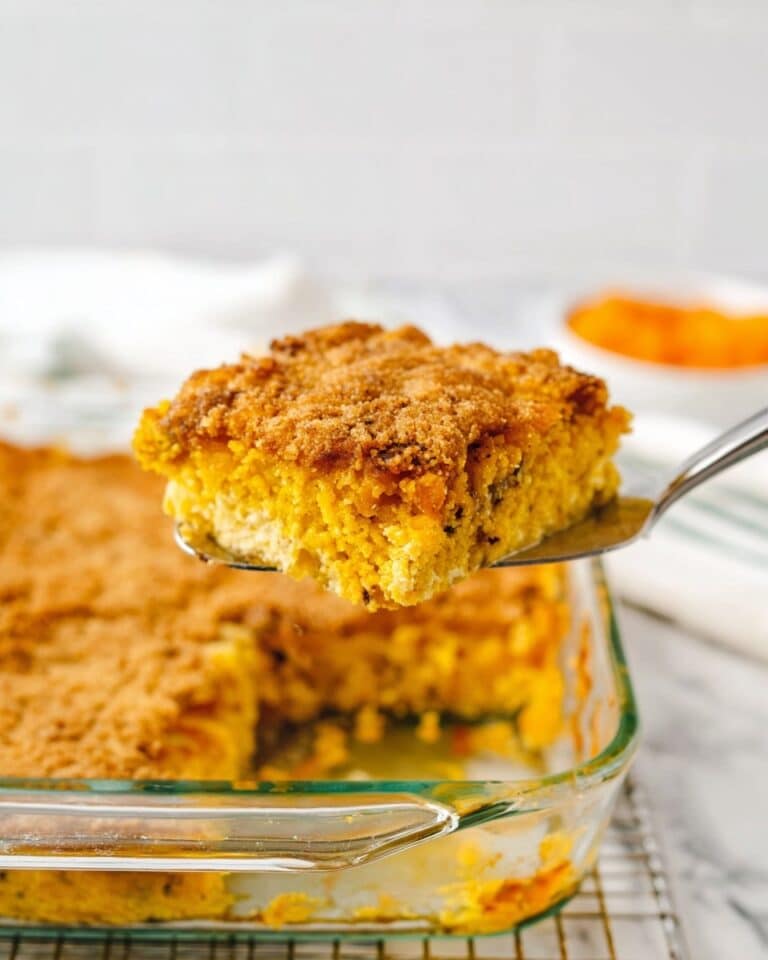If you’re a fan of buttery, crumbly treats with a savory twist, this Salted Rosemary Shortbread Recipe is going to feel like a little miracle in your kitchen. I absolutely love how the fresh rosemary and a hint of flaky sea salt elevate the classic shortbread into something truly special. It’s that perfect balance of sweet, salty, and herbal — so simple but incredibly satisfying.
When I first tried this recipe, I was blown away by how easy it was to whip up with just a handful of ingredients, yet the flavor profile feels downright gourmet. These cookies are amazing on their own with a cup of tea, or even as a surprising accompaniment to cheese and charcuterie. You’ll find that once you get the hang of this Salted Rosemary Shortbread Recipe, it’s going to become your go-to for gifts, gatherings, or just a little personal indulgence.
Why You’ll Love This Recipe
- Simple Ingredients with Big Flavor: This recipe uses everyday pantry staples with fresh rosemary and grapefruit zest to create a unique taste.
- Perfectly Buttery & Crumbly: You’ll get that classic shortbread texture that melts in your mouth every single time.
- Great for Any Occasion: Whether it’s a holiday treat, afternoon snack, or hostess gift, these cookies hit the spot.
- Make-Ahead Convenience: You can bake and cut these a week in advance—making entertaining way easier!
Ingredients You’ll Need
Just a quick note — these ingredients work in harmony to give you that tender, buttery shortbread with just the right herbal and salty kick. Be sure to use fresh rosemary and good-quality butter for the best results.
- Unbleached all-purpose flour: Provides the base for tender, classic shortbread.
- Rice flour: Adds a light texture that helps the shortbread melt in your mouth.
- Kosher salt: Balances sweetness and enhances the rosemary flavor.
- Fresh rosemary: Finely chopped for a fragrant, earthy note throughout the dough.
- Unsalted butter: Room temperature is key to getting the perfect dough consistency and flavor control.
- Granulated sugar: Divided between mixing and topping for sweetness and crunch.
- Grapefruit zest: Adds a fresh, citrus brightness that complements the rosemary beautifully.
- Flaky sea salt: Sprinkled on top for texture and that irresistible salty crunch.
Variations
I love how this basic Salted Rosemary Shortbread Recipe invites all kinds of playful twists depending on your mood or pantry. Don’t hesitate to tweak it to suit your taste or needs — this recipe is pretty forgiving and versatile.
- Variation: When I feel like bringing a little extra depth, I sometimes swap grapefruit zest for lemon or orange zest for a different citrus note.
- Variation: To make it gluten-free, try replacing the all-purpose flour with a gluten-free baking blend, but keep the rice flour for that perfect texture.
- Variation: In the winter months, I occasionally add a pinch of ground cinnamon or cardamom with the rosemary for a cozy twist.
- Variation: If you prefer a vegan version, use vegan butter and make sure it’s at room temperature — it still turns out great!
How to Make Salted Rosemary Shortbread Recipe
Step 1: Prep Your Pan and Mix Dry Ingredients
Start by lining an 8×8-inch baking pan with parchment paper, leaving a nice overhang on two sides so you can easily lift the cookies out later. Whisk together your all-purpose flour, rice flour, chopped rosemary, and kosher salt in a bowl — this ensures the rosemary is evenly dispersed and the salt is well incorporated. This is key for even flavor in every bite.
Step 2: Cream Butter, Sugar, and Zest
Using a stand mixer fitted with a paddle attachment, beat the room temperature butter, half of the sugar, and the grapefruit zest on medium-high speed until the mixture turns light and fluffy. This usually takes about 2 to 3 minutes. Don’t rush this part — a well-aerated butter base leads to that classic shortbread lightness.
Step 3: Combine and Chill the Dough
Add the dry flour mixture to the butter mix and beat on low speed until it looks crumbly, then bump the speed to medium and keep mixing until it comes together nicely, about 2 more minutes. Scrape down your bowl as needed for even mixing. Once combined, press the dough evenly into your prepared pan using an offset spatula — this helps keep the top smooth and ensures even baking. Pop the pan into the fridge to chill until firm, at least one hour. This step helps the cookies hold their shape and not spread during baking.
Step 4: Bake with Sugar and Sea Salt Topping
Preheat your oven to 375°F (190°C). Before baking, prick the dough all over with a fork — a classic trick that keeps the shortbread from puffing up. Sprinkle the remaining tablespoon of sugar evenly over the top, then finish with flaky sea salt for that irresistible salty crunch. Bake for 30 to 35 minutes until the edges turn a gorgeous golden brown and the surface looks evenly toasted.
Step 5: Cut and Cool Your Shortbread Cookies
Right after you pull the pan from the oven, cut the shortbread into four 2-inch wide strips lengthwise, then rotate the pan and cut eight 1-inch wide strips perpendicular to those, making 32 rectangular cookies. Let them rest for 10 minutes before running a thin spatula around the edges to loosen the cookies from the pan. Allow the shortbread to cool completely right in the pan. This is where the parchment overhang shines — you can gently lift the cookies out without damaging their crumbly edges.
Step 6: Separate and Store
Once cooled, use the parchment to lift the shortbread out, and if needed, gently retrace the cut marks to fully separate the cookies. They’re delicate, so handle them with care to keep those buttery edges intact. Enjoy immediately or store them as you like.
Pro Tips for Making Salted Rosemary Shortbread Recipe
- Use Room Temperature Butter: This makes creaming easier and ensures your dough binds perfectly without melting.
- Don’t Skip the Chill: Chilling the dough for at least an hour helps maintain shape and improves texture.
- Fresh Rosemary is Key: I learned that dried rosemary doesn’t provide the same freshness or aroma—use fresh for best flavor.
- Cut Immediately After Baking: Cutting the cookies while warm prevents cracking and keeps edges neat.
How to Serve Salted Rosemary Shortbread Recipe
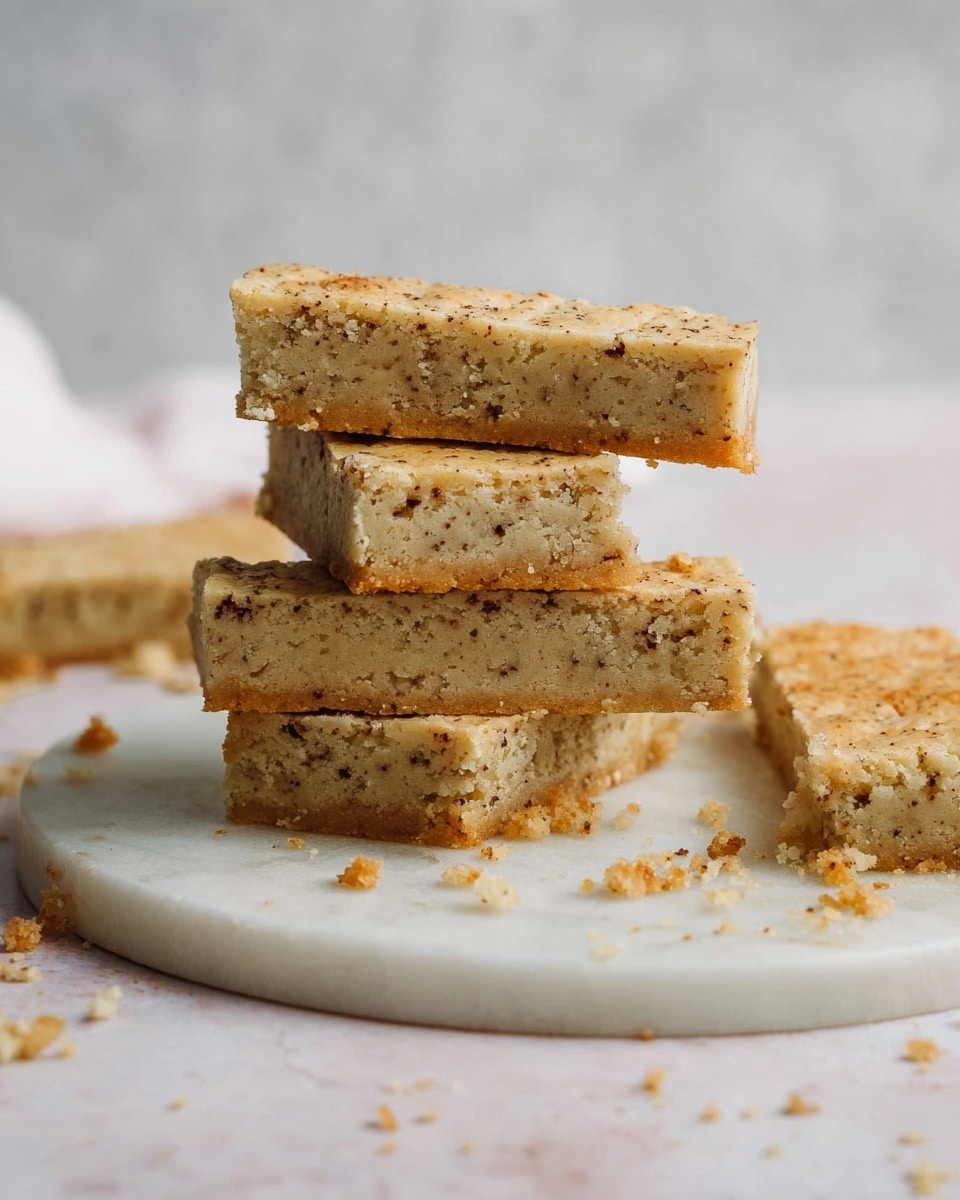
Garnishes
I like to finish these shortbreads with a light sprinkle of extra flaky sea salt right before serving—it really amps up the salty crunch and balances that sweet butteriness perfectly. Sometimes a tiny sprig of fresh rosemary on the serving plate adds a lovely visual touch and a hint of the herb’s aroma as people dig in.
Side Dishes
These cookies pair beautifully with a simple cheese board—think creamy goat cheese or sharp aged cheddar. They’re also great alongside a hot cup of herbal or black tea, making an elegant pairing for afternoon tea or brunch. Occasionally, I serve them with fresh fruit like sliced pears or figs for a light, refreshing contrast.
Creative Ways to Present
For special occasions, I love arranging these in a rustic wooden box lined with parchment paper tied up with twine—simple, charming, and gift-worthy. Another idea is to stack them in a clear glass jar for a pretty countertop display, inviting guests to help themselves. I’ve even wrapped bundles in cellophane with a rosemary sprig tucked in, which makes for an easy and professional-looking gift.
Make Ahead and Storage
Storing Leftovers
I’ve had great success storing my Salted Rosemary Shortbread cookies in an airtight container at room temperature for up to a week. Just make sure the container seals tightly to keep that buttery crunch from turning stale. They actually taste better after a day as the flavors mellow and meld.
Freezing
If you want to make these ahead of time, freezing works wonderfully. I usually bake and cut the shortbread, then arrange the cookies in a single layer between parchment paper in a freezer-safe container. They keep well for up to three months without losing that fresh-baked quality.
Reheating
To refresh frozen or stored cookies, let them come to room temperature, then pop them in a 300°F (150°C) oven for about 5 minutes. This warms them through and crisps the edges, bringing back that just-baked magic. Just watch closely so they don’t brown too much.
FAQs
-
Can I use dried rosemary instead of fresh?
You can, but fresh rosemary offers a much brighter, more aromatic flavor that’s key to balancing the sweetness and saltiness of this shortbread. If you only have dried, use about one-third the amount and finely crush it to release the oils, but expect a milder herbal note.
-
Why is rice flour included in this recipe?
Rice flour helps lighten the shortbread’s texture, making it crumbly and delicate rather than dense or heavy. It also contributes to that melt-in-the-mouth quality that we love in shortbread cookies.
-
How do I prevent my shortbread from spreading too much while baking?
Chilling the dough thoroughly before baking is what stops spreading. The cold solidifies the butter, so the cookies hold their shape and develop a nice, tender crumb without turning into a greasy mess.
-
Can I make this recipe vegan?
Yes! Simply swap out the unsalted butter for your favorite plant-based vegan butter. Keep the other ingredients the same, and you’ll still get that rich, buttery flavor and crumbly texture.
-
How should I store leftover salted rosemary shortbread cookies?
Store leftovers in an airtight container at room temperature for up to a week. For longer storage, freeze in a sealed container with parchment layers, and thaw before enjoying.
Final Thoughts
Honestly, this Salted Rosemary Shortbread Recipe has become one of my absolute favorites not just because it’s delicious, but because it brings a little extra joy to the everyday. There’s something so comforting about the buttery richness paired with bright rosemary and that pop of sea salt. Trust me, once you make these, you’ll find yourself reaching for them time and again, whether for a simple snack or to impress guests without fuss. Give it a try and watch how these humble cookies become a cherished staple in your kitchen too.
Print
Salted Rosemary Shortbread Recipe
- Prep Time: 1 hour 20 minutes
- Cook Time: 30 to 35 minutes
- Total Time: 1 hour 50 minutes
- Yield: 3 dozen cookies (32 pieces)
- Category: Baking
- Method: Baking
- Cuisine: American
- Diet: Vegetarian
Description
This Salted Rosemary Shortbread recipe combines the fragrant herbal notes of fresh rosemary with a hint of grapefruit zest, creating a perfect balance of savory and sweet. The shortbread is buttery and tender with a delightful crunch from flaky sea salt sprinkled on top. Perfect for teatime or as a sophisticated snack, these delicate cookies can be made ahead and stored for up to a week or frozen for longer freshness.
Ingredients
Dry Ingredients
- 1 1/2 cup (180g) unbleached all-purpose flour
- 1/3 cup (43g) rice flour
- 1/2 teaspoon kosher salt, plus more to taste
- 2 tablespoon fresh rosemary, finely chopped
Wet Ingredients
- 1 cup (2 sticks, 1/2 pound, or 227g) unsalted butter, room temperature
- 1/2 cup plus 1 tablespoon (112g) granulated sugar, divided
- 2 teaspoon finely grated grapefruit zest
Topping
- Flaky sea salt, for topping
Instructions
- Prepare the Pan and Dry Ingredients: Line an 8 x 8-inch (20 x 20 cm) baking pan, preferably glass, with parchment paper leaving overhang on two sides for easy removal. In a bowl, whisk together the all-purpose flour, rice flour, chopped rosemary, and 1/2 teaspoon kosher salt. Set aside.
- Cream Butter, Sugar, and Zest: In the bowl of a stand mixer fitted with a paddle attachment, combine the room temperature unsalted butter, 1/2 cup sugar (100g), and grapefruit zest. Beat on medium-high speed for 2 to 3 minutes until the mixture is light and fluffy, scraping down the sides as necessary.
- Incorporate Flour Mixture: Add the reserved flour mixture to the butter mixture. Begin beating on low speed until the mixture becomes crumbly, then increase speed to medium and continue beating for about 2 minutes until well combined. Scrape down the bowl as needed. The dough will be somewhat crumbly but should hold together when pressed.
- Press and Chill Dough: Transfer the dough into the prepared baking pan. Using an offset spatula, spread and press the dough evenly into the pan and smooth the surface. Cover and chill in the refrigerator until firm, about 1 hour.
- Preheat Oven and Prepare for Baking: Preheat your oven to 375°F (190°C). Once chilled, prick the shortbread all over with a fork to help steam escape during baking. Sprinkle the remaining 1 tablespoon sugar evenly on top, followed by a generous sprinkling of flaky sea salt.
- Bake the Shortbread: Bake the shortbread for 30 to 35 minutes or until it is golden brown around the edges and an even golden color on top.
- Cut the Cookies: Remove the pan from the oven and immediately score the shortbread into shaped cookies while still warm. First, cut four 2-inch wide strips lengthwise, then rotate the pan 90 degrees and cut eight 1-inch wide strips perpendicular to the first cuts, resulting in 32 rectangular cookies. Let the shortbread rest for 10 minutes, then run a thin spatula around the edges so the cookies don’t stick to the pan as they cool. Allow to cool completely in the pan.
- Remove and Separate: Using the parchment paper overhang, lift the cooled shortbread out of the pan. If needed, retrace the cut marks to separate the cookies fully.
- Storage Tip: These cookies can be baked, cut, and cooled up to one week in advance. Store the shortbread in an airtight container at room temperature, or freeze for up to three months to maintain freshness.
Notes
- Using a combination of all-purpose and rice flour creates a tender and crumbly texture.
- Be sure to use unsalted butter so you can control the salt level, balancing it with the kosher salt in the dough and flaky sea salt on top.
- The grapefruit zest adds a subtle citrus brightness that complements the rosemary perfectly.
- Allowing the dough to chill before baking helps maintain shape and texture during baking.
- Cutting the shortbread while warm ensures clean, even cuts without crumbling.
- Shortbread cookies keep well and can be made ahead of time for convenience.
- Store at room temperature in airtight containers or freeze for long-term storage to preserve freshness.
Nutrition
- Serving Size: 1 cookie
- Calories: 110
- Sugar: 5g
- Sodium: 100mg
- Fat: 8g
- Saturated Fat: 5g
- Unsaturated Fat: 3g
- Trans Fat: 0g
- Carbohydrates: 11g
- Fiber: 0.3g
- Protein: 1g
- Cholesterol: 20mg

